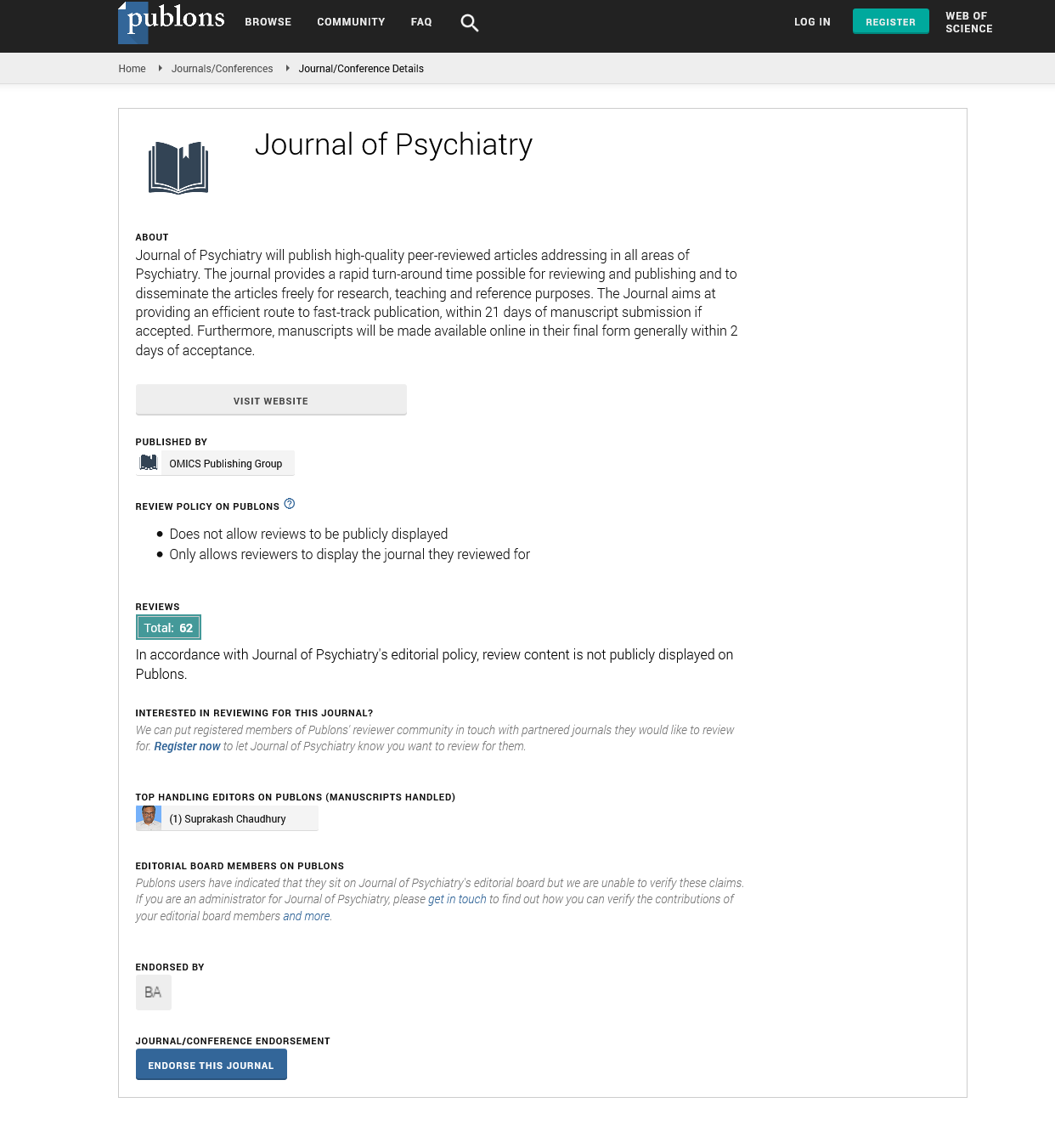Indexed In
- RefSeek
- Hamdard University
- EBSCO A-Z
- OCLC- WorldCat
- SWB online catalog
- Publons
- International committee of medical journals editors (ICMJE)
- Geneva Foundation for Medical Education and Research
Useful Links
Share This Page
Open Access Journals
- Agri and Aquaculture
- Biochemistry
- Bioinformatics & Systems Biology
- Business & Management
- Chemistry
- Clinical Sciences
- Engineering
- Food & Nutrition
- General Science
- Genetics & Molecular Biology
- Immunology & Microbiology
- Medical Sciences
- Neuroscience & Psychology
- Nursing & Health Care
- Pharmaceutical Sciences
Examining the Relationship between Verbal Fluency and Brain Morphometry in Boys and Girls with Autism Spectrum Disorders
28th International Conference on Psychiatry and Mental Health
November 20-21, 2017 Melbourne, Australia
Christina Chen and John Van Horn
University of Southern California, USA
Scientific Tracks Abstracts: J Psychiatry
Abstract:
Autism spectrum disorder (ASD) is a mental health condition associated with communication deficits. Previous studies
have examined the relationship between the left superior temporal gyrus and receptive language ability in children with
ASD [1]. However, little is known about the neural substrates behind verbal fluency in boys and girls with ASD. Our goal is
to examine the brain regions involved in verbal fluency in boys with ASD, relative to girls.
Methods: Five research institutions were involved in data collection: USC, UCLA, Seattle Children‚??s Institute, Harvard, and
Yale. The sample included 73 boys with ASD, 62 girls with ASD, 59 typically developing (TD) boys, and 48 TD girls, ages 7
to 17. Diagnosis was based on the Autism Diagnostic Interview-Revised [2] and Autism Diagnostic Observation Schedule-
II [3]. Verbal fluency was defined as one‚??s ability to formulate sentences, evaluated by the Clinical Evaluation of Language
Fundamentals Scale [4]. Freesurfer[5] was used to determine gray mattervolumes for regions of interest known to be related
to language: left and right thalamus, inferior frontal cortex, and superior temporal cortex. Hierarchical multiple regressions
and MANOVA were performed, with sex and diagnosis as independent variables while age, pubertal status, handedness, and
intracranial volume served as controls.
Results: There was a main effect of sex (p=.011) and diagnosis (p<.001) on the ability to formulate sentences. A
sex by diagnosis interaction was discovered on the left inferior frontal cortex (LIFC) (p=.045), while a main effect
of diagnosis was found on the right superior temporal cortex (p=.006). LIFC significantly predicted formulated
sentence scores (p=.003).Conclusion: TDboysdisplayedsignificantlygreaterLIFCthanboyswithASD, indicating that
afailureoflefthemisphericlateralizationforverbalfluencymaydependondiagnosis. Furthermore, theLIFCvolume, previously
discovered to be related to spoken sentences with world knowledge anomalies[6],mayalso beimplicatedin expressiveverbalfluency.
References
1. Bigler, E.D., et al., Superior temporal gyrus, language function, and autism. Dev Neuropsychol, 2007. 31(2): p. 217-38.
2. Lord, C., M. Rutter, and A. Le Couteur, Autism Diagnostic Interview-Revised: a revised version of a diagnostic interview
for caregivers of individuals with possible pervasive developmental disorders. J Autism Dev Disord, 1994. 24(5): p. 659-85.
3. Lord C, R.M., DiLavore PC, Risi S, Gotham K, Bishop S., Autism Diagnostic Observation Schedule, Second Edition
(ADOS-2) Manual (Part I): Modules 1‚??4. 2012, Torrance, CA: Western Psychological Services.
4. Wiig, E.H., Semel, E., Secord, W.A., Clinical Evaluation of Language Fundamentals, Fifth Edition. 2013, Bloomington,
MN: NCS Pearson.
5. Dale, A.M., B. Fischl, and M.I. Sereno, Cortical surface-based analysis. I. Segmentation and surface reconstruction.
Neuroimage, 1999. 9(2): p. 179-94.
6. Tesink, C.M., et al., Neural correlates of language comprehension in autism spectrum disorders: when language conflicts
with world knowledge. Neuropsychologia, 2011. 49(5): p. 1095-104
Biography :
Christina Chen is a PhD candidate in Neuroscience at the University of Southern California, Los Angeles. She has presented her research at many international scientific conferences and published peer-reviewed articles on sex differences in autism spectrum disorders. Her current interests include examining the brain structure of boys versus girls with autism exhibiting language deficits and restricted repetitive behavior.
Email: chencs@usc.edu

